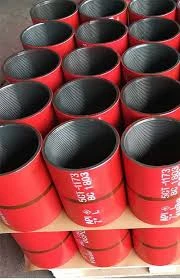- Afrikaans
- Albanian
- Amharic
- Arabic
- Armenian
- Azerbaijani
- Basque
- Belarusian
- Bengali
- Bosnian
- Bulgarian
- Catalan
- Cebuano
- Corsican
- Croatian
- Czech
- Danish
- Dutch
- English
- Esperanto
- Estonian
- Finnish
- French
- Frisian
- Galician
- Georgian
- German
- Greek
- Gujarati
- Haitian Creole
- hausa
- hawaiian
- Hebrew
- Hindi
- Miao
- Hungarian
- Icelandic
- igbo
- Indonesian
- irish
- Italian
- Japanese
- Javanese
- Kannada
- kazakh
- Khmer
- Rwandese
- Korean
- Kurdish
- Kyrgyz
- Lao
- Latin
- Latvian
- Lithuanian
- Luxembourgish
- Macedonian
- Malgashi
- Malay
- Malayalam
- Maltese
- Maori
- Marathi
- Mongolian
- Myanmar
- Nepali
- Norwegian
- Norwegian
- Occitan
- Pashto
- Persian
- Polish
- Portuguese
- Punjabi
- Romanian
- Russian
- Samoan
- Scottish Gaelic
- Serbian
- Sesotho
- Shona
- Sindhi
- Sinhala
- Slovak
- Slovenian
- Somali
- Spanish
- Sundanese
- Swahili
- Swedish
- Tagalog
- Tajik
- Tamil
- Tatar
- Telugu
- Thai
- Turkish
- Turkmen
- Ukrainian
- Urdu
- Uighur
- Uzbek
- Vietnamese
- Welsh
- Bantu
- Yiddish
- Yoruba
- Zulu
pup joint drilling
The Significance of Pup Joint Drilling in Oil and Gas Operations
In the realm of oil and gas exploration and extraction, the term pup joint refers to a short pipe segment used to adjust the length of drill strings. These specialized connectors play a crucial role in the overall drilling process, facilitating efficiency and adaptability in various drilling scenarios. Understanding pup joint drilling is important for professionals in the industry, as it enhances operational effectiveness and contributes to the cost-effectiveness of drilling projects.
A pup joint typically ranges in length from 2 to 8 feet and is designed to connect two sections of drill pipe, allowing for adjustments in the depth and configuration of the drill string. This flexibility is vital for optimizing drilling operations, especially in complex geological formations where precise drilling parameters are imperative. The use of pup joints ensures that the drill string maintains its integrity and performance during various drilling phases.
One of the primary advantages of utilizing pup joints is the ability to make quick adjustments to the drilling assembly without the need for extensive reconfiguration. In conventional drilling operations, if the drill string needs to be extended or shortened, the process can be time-consuming and may lead to costly non-productive time (NPT). Pup joints alleviate this issue, enabling operators to make necessary adjustments swiftly, reducing downtime and enhancing overall project efficiency.
Moreover, pup joints facilitate the adaptation to changes in geological conditions. As drilling progresses, the formation being penetrated may change, impacting the drilling parameters. By incorporating pup joints, drillers can easily modify the weight on the bit and other crucial operational parameters, responding effectively to varying conditions. This responsiveness is essential in maximizing the rate of penetration (ROP) and ensuring the wellbore remains stable, ultimately leading to more successful drilling operations.
pup joint drilling

Another critical aspect of pup joint drilling is the enhancement of safety measures. The drilling industry is inherently hazardous, and ensuring the safety of personnel and equipment is paramount. Properly integrated pup joints can help mitigate risks associated with drilling operations. By allowing for the rapid adjustment of drilling parameters, pup joints reduce the chances of unexpected drill string failures or blowouts caused by inappropriate pressure distribution along the pipe.
In addition to operational efficiency and safety, pup joints contribute to the economic viability of drilling projects. The oil and gas industry is characterized by fluctuating market conditions, making cost management a priority for operators. By minimizing downtime and enhancing the adaptability of drilling operations, pup joints help lower operational costs. Their versatility means that operators can maximize resource extraction while minimizing waste, leading to better profit margins.
The technological developments surrounding pup joint drilling have also seen advancements in materials and manufacturing techniques. Modern pup joints are typically made from high-strength steel, designed to withstand the extreme conditions encountered in deep well drilling. Innovations in welding and joint design have improved the durability and reliability of these components, further enhancing their performance and longevity in harsh environments.
In conclusion, pup joint drilling serves as a fundamental component of efficient and safe oil and gas operations. Their ability to provide flexibility, enhance safety measures, and contribute to cost savings makes pup joints invaluable in the industry. As the demands on drilling operations continue to evolve, the role of pup joints will likely become even more significant, driving innovation and efficiency in oil and gas exploration. Understanding and utilizing pup joints effectively is essential for professionals in the field, ensuring that they are equipped to meet the challenges of modern drilling operations.
-
Tubing Pup Joints: Essential Components for Oil and Gas OperationsNewsJul.10,2025
-
Pup Joints: Essential Components for Reliable Drilling OperationsNewsJul.10,2025
-
Pipe Couplings: Connecting Your World EfficientlyNewsJul.10,2025
-
Mastering Oilfield Operations with Quality Tubing and CasingNewsJul.10,2025
-
High-Quality Casing Couplings for Every NeedNewsJul.10,2025
-
Boost Your Drilling Efficiency with Premium Crossover Tools & Seating NipplesNewsJul.10,2025







